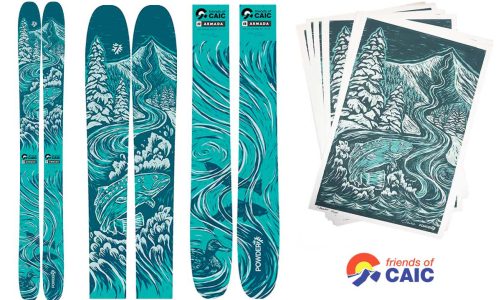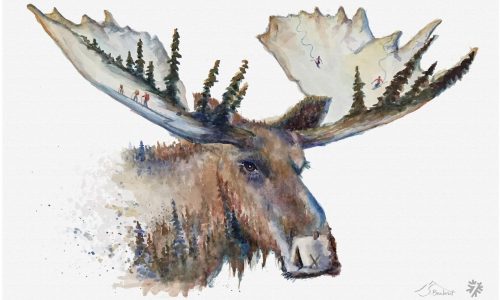Welcome to the world of alpine touring.
First, know this: You are not the only person wondering how to get into backcountry skiing. In 2020, the COVID-19 outbreak has cast uncertainty over the entire institution of resort skiing. One side effect? The smoldering log of alpine touring interest has been doused with lighter fluid.

Backcountry skiing is a great way to get that essential Vitamin D plus fresh air and exercise. It also (usually) offers a respite from crowds. Skiers who are well-versed in backcountry travel—who already have the gear and the knowledge—have been finding solace in their favorite zones since long before coronavirus happened. #Cancelchairlifts may not have trended, but the sentiment exists on a personal level for many skiers. Others simply love balancing their fast-paced resort days with backcountry peace.
Backcountry skiing also kills. Avalanches claim skiers’ lives every year. Some of those skiers are experts.
How to Start Backcountry Skiing
So, in order to chart a safe and satisfying course into the world of alpine touring, it’s useful to take the right first steps:
- Know what you know, and know what you don’t.
- Get the gear.
- Get educated.
- Find good partners.
- Start small.
“Knowing you know nothing about avalanches is the first step to, well, knowing something about avalanches.”
1. Know What You Know, and Know What You Don’t
Before you shell out $2,000 on new gear and wander up an unfamiliar trail, we recommend some self-assessment. Start by asking yourself these questions:
What is your ski level, and can you identify an appropriate run in the backcountry?
Do you know how, where, and when avalanches happen?
Do you know how to stay out of harm’s way in the backcountry?
Do you know how to use ski touring and avalanche safety gear?
Can you dress and pack appropriately for winter backcountry travel?
Answering these questions honestly will give you a foundation. For example, knowing you know nothing about avalanches is the first step to, well, knowing something about avalanches. Rather than blindly following someone else’s tracks up a trail (a person who may also know nothing), learn how to stay out of hazardous situations first. And also, learn what you will do if something goes wrong. This applies to avalanches, sure, but it is also a useful approach for other hazards, like gear failure, being under-dressed for the elements, getting lost, etc.

2. Get the Gear
When you are figuring out how to start backcountry skiing, the gear part can feel like an enigma wrapped in a conundrum. That’s where we come in! As always, you can call Powder7 at 303-237-7547 to talk gear. Here are your options. Don’t miss our alpine touring shopping list below!
Get a Frame Alpine Touring Setup
Frame alpine touring bindings allow you to skin uphill without buying a touring boot. They descend as full-on alpine bindings, so you can use them confidently for all your resort skiing, too. This option requires the least commitment and is often the least expensive. The downside is that, for touring, these setups are on the heavier side. And beware the alpine-boot blisters!
Get a Full-On Touring Setup
Powder7 sells a variety of used alpine touring setups, some with frame bindings and others with tech touring bindings. Tech touring bindings help you save considerable weight, but they can only be used with touring boots, which feature walk modes, lightweight materials, and pin fittings. If you are looking to piece together a new setup, you can find lightweight skis and tech bindings on their own, allowing you to build the perfect kit for your human-powered future.
Get a Do-Everything Hybrid Setup
The newest craze in the backcountry skiing world is the advent of hybrid alpine touring bindings. These allow you to tour uphill in a relatively lightweight binding with tech pins. For the downhill, the pins stow and you descend in a full-on alpine binding. Add a hybrid touring boot to maximize the versatility of your ski kit with the fewest numbers of products.
Don’t Forget Skins and Safety Gear
First, you would be surprised at how many people buy AT setups without realizing they need climbing skins in order to go uphill. Don’t be that person.
And second, do not skip safety gear. Even if you just want to ski right now and think you will do it safely, take a moment to consider the risk. By getting into alpine touring, you’re setting yourself up for next season and beyond. A full setup isn’t complete without the gear you need to stay safe in the backcountry. At minimum, that’s a beacon, a probe, and a shovel. You also need to know how to use them and practice.
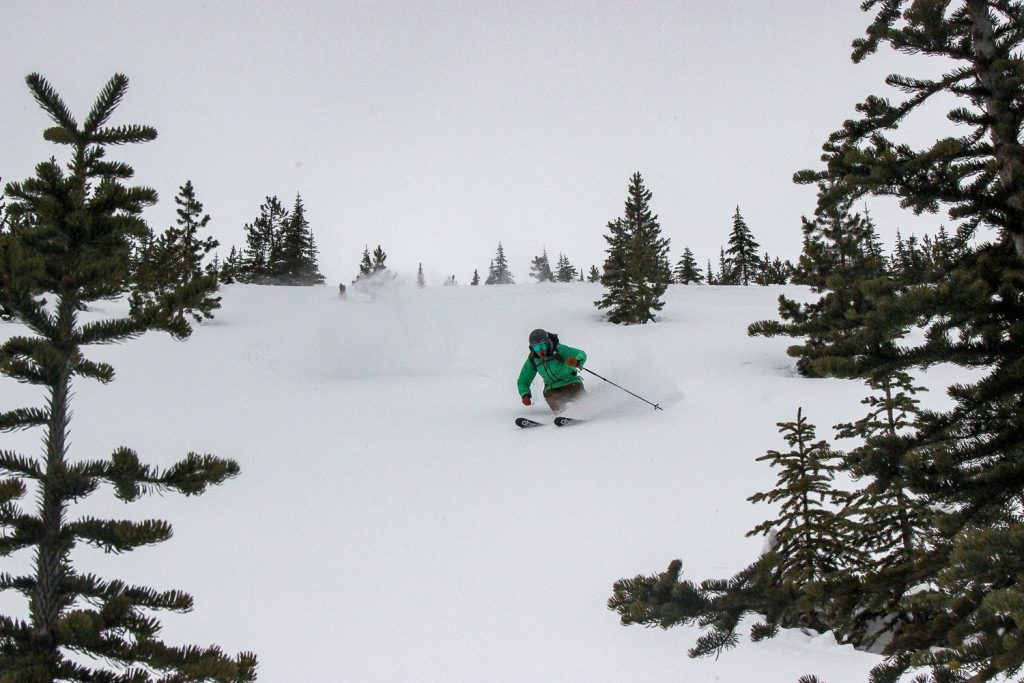
3. Get Educated
This blog post, along with whatever similar articles or videos you have consumed online, do not substitute for formal avalanche safety training. Keep yourself, your friends, and other backcountry travelers safe by taking an AIARE Level 1 course before you ski in the backcountry.
Naturally, not all skiers who get into backcountry skiing will start with a full Level 1. Such is life. One more time: We do not recommend this approach. However, there are a few basic steps you can take on your own to begin your avalanche safety journey.
Watch this Video. Then Watch It Again.
Know Before You Go, is an industry-standard as in introduction to avalanche safety. It’s a great starting point, but it doesn’t take the place of actual avalanche education, like an AIARE Level 1 course.
Read Up.
Various books can help you turn on your radar to avalanche concerns. We recommend starting with Staying Alive in Avalanche Terrain and Snow Sense: A Guide to Evaluating Snow Avalanche Hazard.
Study the Forecast.
Each day during the winter, professional avalanche forecasters publish avalanche forecasts for various mountain regions across the country. You can find the forecasts here. At minimum, read the forecast the day and morning before you go ski touring. By reading it daily, you will pick up valuable insight and recommendations for safe backcountry travel.
Practice Avoidance.
In those avalanche forecasts, you will quickly notice a trend, especially here in Colorado. During the winter, the gameplan is often to stick to low-angle, safe zones away from avalanche terrain. Again, you should be able to safely find these zones before you go skiing, and you should still bring the requisite safety gear in case something goes wrong. But the bottom line is this: You can go backcountry skiing without putting yourself in danger of avalanches. They key is knowing how and where to go.

Practice the Skills.
What good are skills and gear if you forget how to use them? Even after you take an avalanche course, find mellow trailheads or zones and practice with your gear. That could mean skinning up a logging road to get used to how your bindings, boots, and skins work. It could also mean practicing with your avalanche gear. Time some beacon searches and make the slowest person buy a take-out six-pack from a local brewery.
4. Find Good Partners
One way to help you approach your backcountry skiing career responsibly? Pick good people to ski with. These could be more experienced skiers who help line you out and watch your back. Or, they could be people with your similar ability level who are equally as hesitant as you are and will keep you company on safe, mellow days. You can get comfortable with gear together and eventually help each other hone skills. The right partner will help you make good decisions (like, maybe only skinning at the resort until you each take a Level 1 course). Remember, if you enter avalanche terrain with someone, they need to be able to save you, and vice versa.
Oh, and a word about “experts”: Always keep your guard up. Every year, expert skiers wind up in avalanches. So, unfortunately, just because someone sounds like they know what they are doing doesn’t mean they actually do. It’s great to go out with an experienced skier for a mellow ski day where you learn the gear, the movements, and the snow. But avoid blindly skiing steeper terrain with someone you don’t know well. Keep in mind: Even the equivalents of blue-square trails at resorts can avalanche in the backcountry. A run does not have to be super scary to be dangerous.
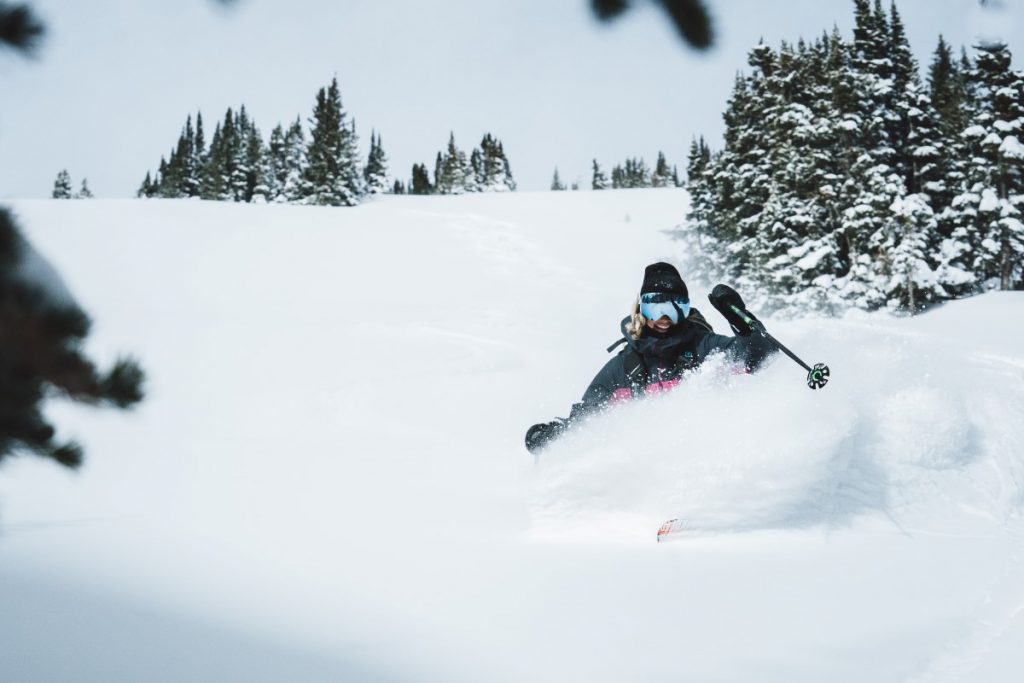
5. Start Slow
All right. You’ve got the gear. You’ve filled your brain with best practices on avalanche safety. You’ve got great friends to ski with. Now it’s full speed ahead, right?
Not so fast. Think about it this way: You just invested all that money and time in a new lifestyle. This is an investment in your future, not just next weekend. If you ease yourself into ski touring, gaining comfort and skills slowly and deliberately, you will find much more satisfaction than if you dive in at full speed. Not to mention, you will keep yourself and others safe.
Start by breaking in your gear and learning how to skin at resorts. Most mountains have uphill travel policies, so read up and buy a cheap pass for skinning. Plenty of skiers only ever ski tour at resorts. Why? It’s far safer and more predictable than the actual backcountry.
If you find yourself in Colorado, you may also check out the country’s first 100% human-powered ski area: Bluebird Backcountry. Here, you’ll find pre-set skin tracks, avalanche reports, low-angle terrain, lessons, and a supportive community of uphill skiers.
Neither of these an option for you? Connect with other skiers, hunt down additional resources, and build the knowledge to help you find safe, mellow zones. But be warned: Once you start earning your powder turns, you may not want to stop.
Here’s the Gear You Need to Get Started
The ultimate shopping list!
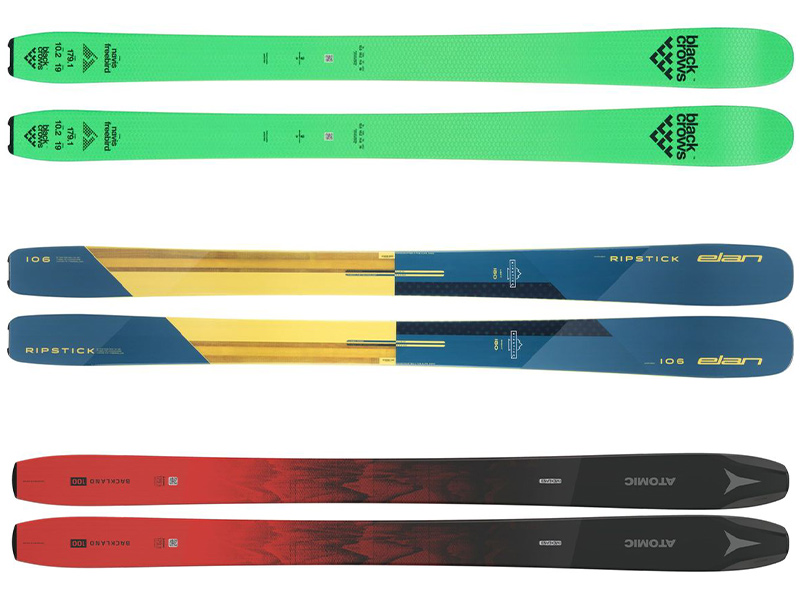
Skis
Everyday: Black Crows Navis Freebird – 102mm – A bestseller for everyday touring.
Resort crossover: Elan Ripstick 106 (men’s) or 102W (women’s) – 106mm or 102mm – One of our all-time shop favorites…and light enough to tour on.
Lightest: Atomic Backland 100 (men’s) or 98W (women’s) – 100mm or 98mm – The newest models in the Backland family weighed in as the lightest 2021 skis we carry (measured in grams per square inch).
Bindings
Resort crossover: Salomon Shift MNC – 1780 grams – The gold-standard in resort/touring hybrid performance.
Touring-Specific: ATK Raider 12 – 652 grams – A top choice among tech touring bindings.
Boots
Resort crossover: Lange XT3 120 (men’s) or XT3 110 W – Also available in different flexes, plus narrower “LV” (low-volume) versions.
Touring: Tecnica Zero G Tour Pro (men’s) or Zero G Tour W (women’s)
Climbing Skins
Pomoca Climb 2.0. Be sure to choose your size based on the widest part of your ski. You’ll want tip width (in mm) rather than waist width.
Avalanche Safety Gear
BCA Tracker S Rescue Package. Includes a beacon, shovel, and probe.
Backpack
Dakine Poacher RAS 26L . The right features in a size perfect for normal day-to-day tours.
See more alpine touring insight in our Ultimate Guide to Backcountry Skiing

